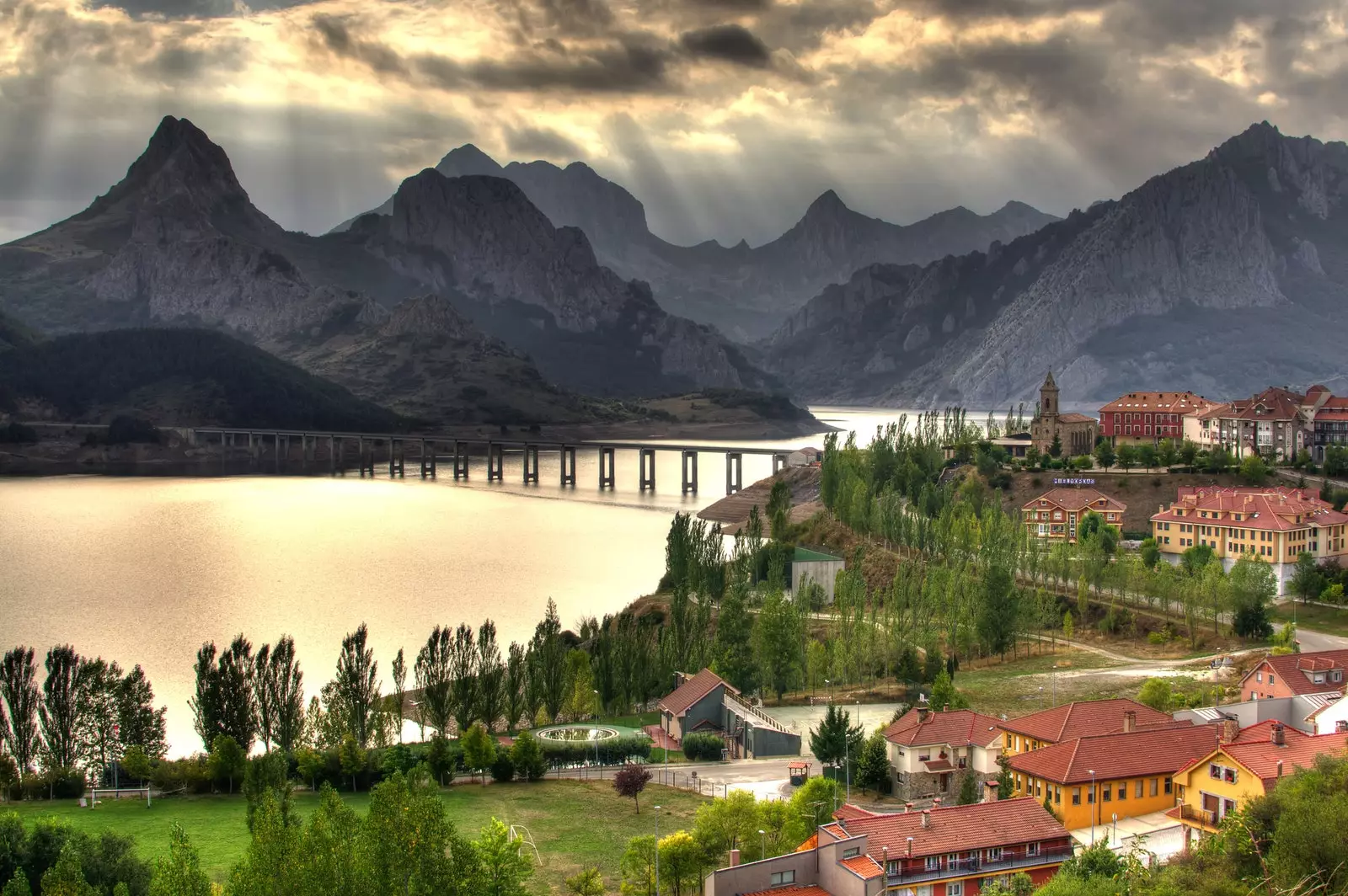
Riaño and its reservoir, in the Riaño and Mampodre Mountain Regional Park, León.
The Leonese fjords, that is how they have begun to call for some time the Riaño reservoir, located in the eastern mountains of León. And I understand the comparison as a tourist attraction, if we take into account their shared natural beauty and the fact that the water flows in both cases between grandiose peaks.
But staying there, just in the cliché, would be disrespectful to all the families who were forced to leave their homes and they saw how their villages were drowned by the water of the Esla River on December 31, 1987, day on which the gates of the La Remolina dam were closed. It was a quick thing (the next day a European regulation came into force that could have paralyzed its construction for environmental reasons), but not painless, since the feeling of injustice and helplessness still survives in the collective consciousness of the region.
Comparisons in the Riaño valley are not new, in the middle of the last century it was known as the 'Spanish Switzerland', In addition to its impressive natural beauty, the Riaño National Tourism Parador (now defunct) brought to the mountains of Leon luxury services that are unusual in the region.
However, it is time to stop using figures of speech and calling things by their name: Riaño is a reservoir (in addition to a new town) and that does not mean that the landscape is spectacular, As much as we know (and it still hurts us) that Anciles, Salio, Huelde, Éscaro, La Puerta, Burón, Pedrosa del Rey, Riaño and Vegacerneja rest under its waters.
And there is no better way to pay homage to these peoples and participate in the local economy than to get closer to discover everything that the Riaño and Mampodre Mountain Regional Park has to offer. A name, by the way, so extremely new (it was adopted to differentiate itself from the Picos de Europa National Park) that until recently it did not appear on Google Maps (they got it thanks to a popular request). So, if you don't want to miss this little piece of the Cantabrian Mountains in León, we recommend that you keep an eye on our instructions.
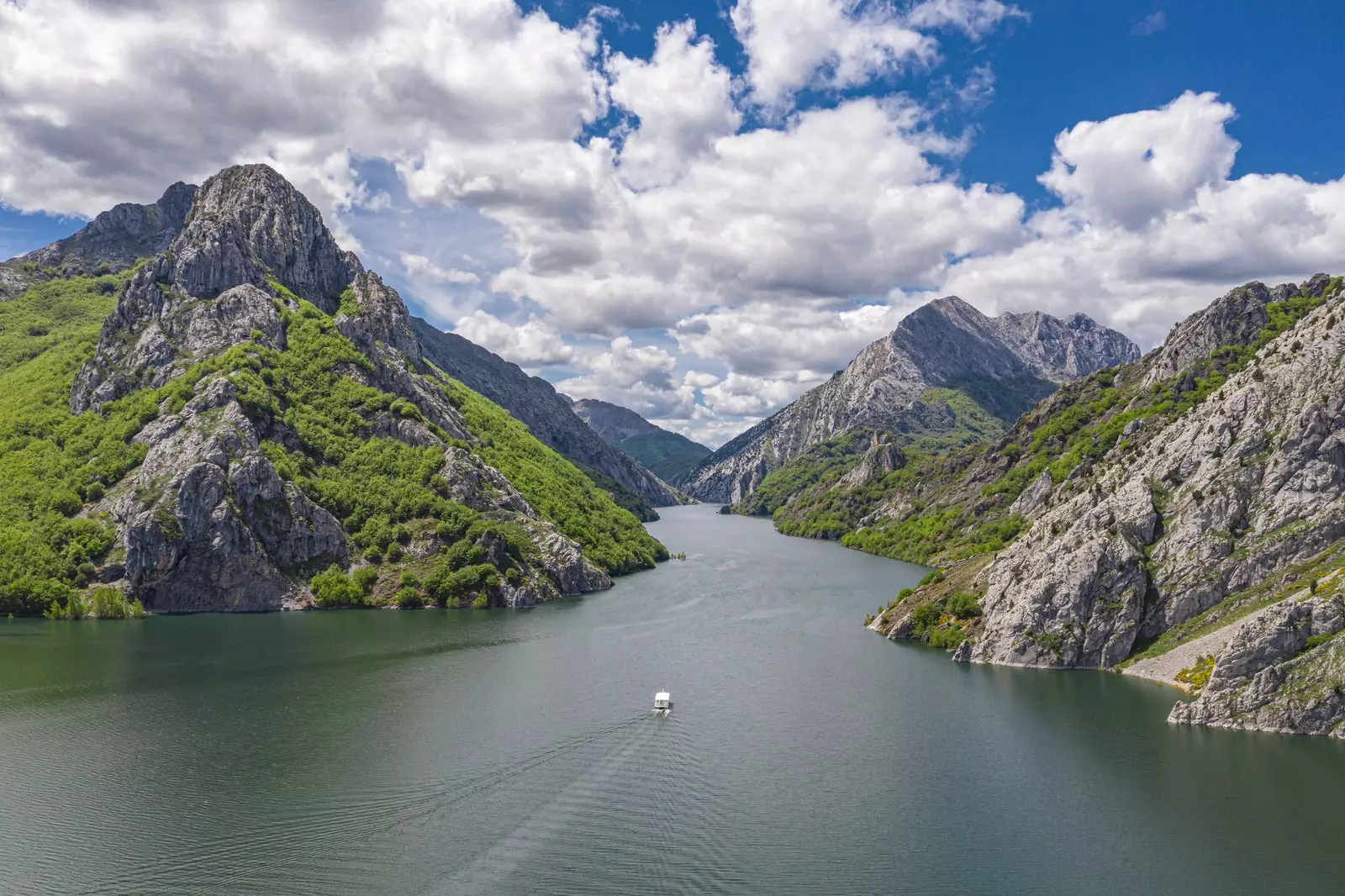
Boat route through the Riaño reservoir, in León.
THE NEW VILLAGE OF RIAÑO
Riano It is the newest town in the province of León, so you should not be surprised by its modern urbanism, in which buildings with current aesthetics intermingle with **others clad in stone in the more traditional style. **
An important crossroads between the provinces of León, Asturias and Cantabria, Riaño rests today on a hill (before it was deep in the valley, now flooded), which means that its architectural profile stands out above the water level. So does the great viaduct that gives access to the eastern part of Asturias (by the N-625 that arrives from the city of León) and to the port of San Glorio (by the N-621), which connects León with Cantabrian lands.
In the central square of Cimadevilla is the parish church of Santa Águeda, which was brought stone by stone from the disappeared Pedrosa del Rey to bring a bit of history to the town with its tower from the 16th century and its outstanding imagery from the 17th and 18th centuries. Just opposite is the Ethnographic Museum of Riaño, which includes pieces ranging from prehistory to the 60s and 70s of the 20th century, such as the pre-Roman tombstones of the Vadinian people and the medieval funerary stelae of the 10th century.
Also in the square, converted by the city council into an open-air museum, there is a Leonese hórreo (small and gabled), a shoeing colt (which was used to put a horseshoe on the cows), a shepherd's hut of the 'horma' or 'terruca' type (with a circular floor plan and covered with conical hazel branches), a bell tower of the Council and the steel silhouettes of a mountain goat and a wolf, in representation of the rich wild fauna that inhabits the Riaño Mountain.
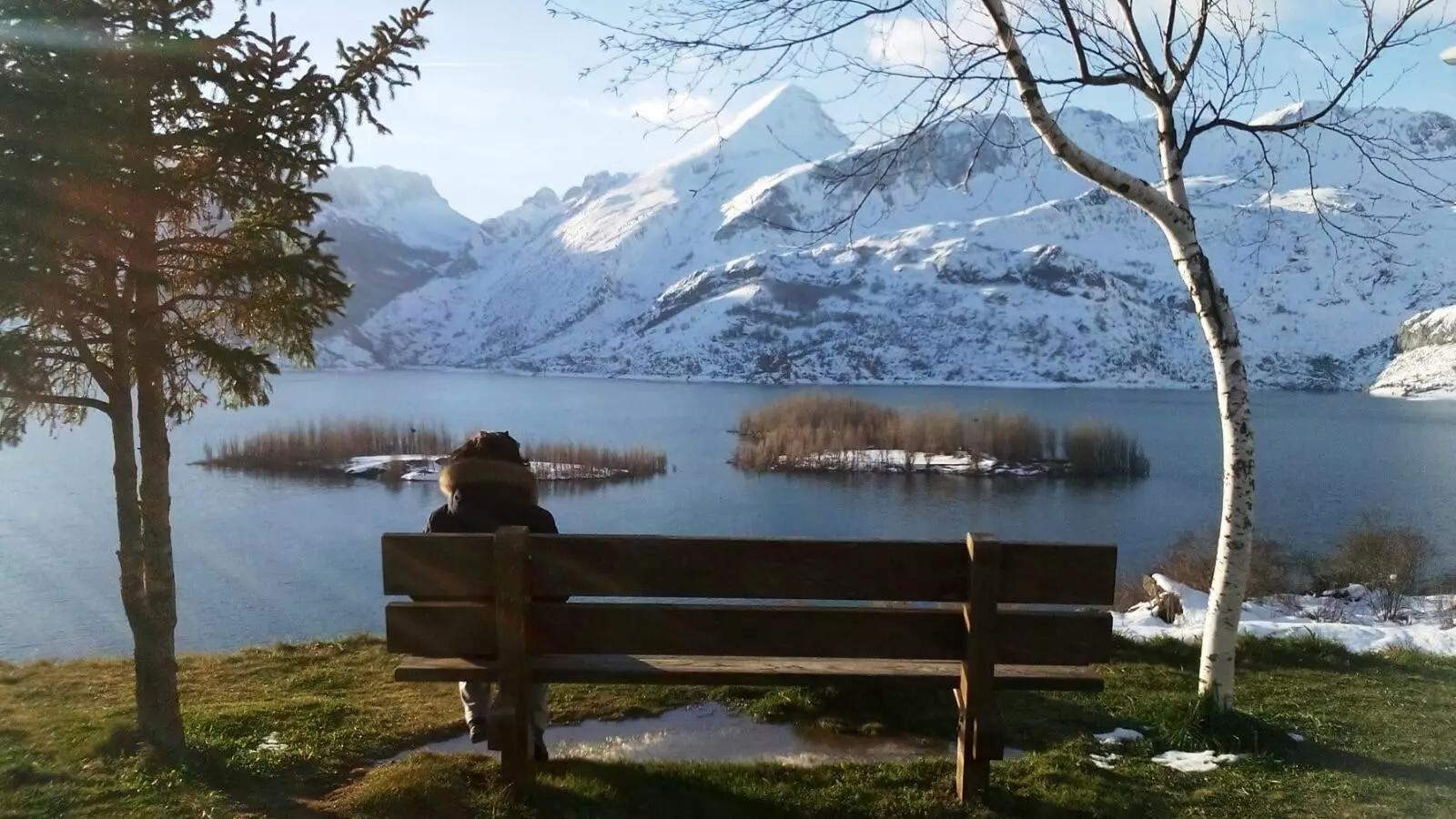
The 'most beautiful bench in León' is in Riaño.
Another church, that of Nuestra Señora del Rosario (originally from the town of La Puerta and also moved to Riaño), is the one that lately is demanding more attention from the visitor, and not because of the Romanesque, Gothic and Baroque paintings inside, not even because of the Leonese-type hórreo coming from the town of Salio that is right next door, but because next to it is the baptized as ‘the most beautiful bench in León’, with views of the Gilbo, Yordas and Las Pintas peaks.
in this same space, dedicated to the memory, there are two other contemporary structures that are a faithful reflection of the intentionality of a region that wants to look to the future without forgetting the past: The silence of the bells (an iron monument that holds the bells of the towns that were submerged under the waters of the reservoir) and Las Letronas de Riaño, some giant letters dubbed by the local press as Riaño Sing by analogy with those of Hollywood.
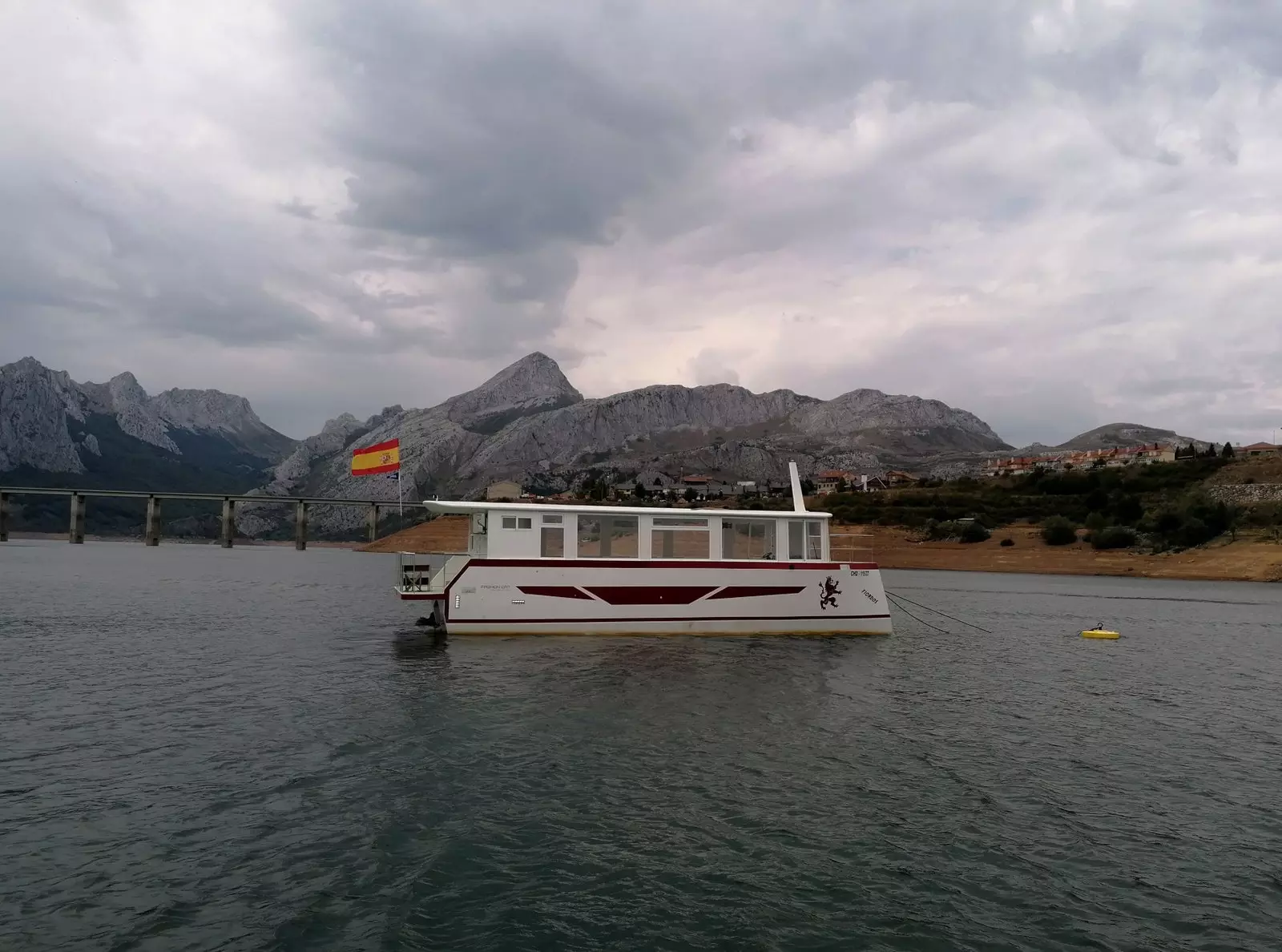
Catamaran of the company Riaño en Barco.
WALK OF MEMORY AND BOAT ROUTE
From the 14th-century rural Romanesque-style church (or from the most instagrammable bank in León, whichever way you prefer to remember it) starts the one-kilometer pedestrian path that runs along the shore of the reservoir called the Paseo del Recuerdo. A short and simple route, dotted with information panels -which serve to remember the history of Old Riaño–, and that culminates next to two remarkable places in the town: the Corro de Aluches (a circular building, covered, with stands and natural grass in the center where the Leonese wrestling rings are held) and the Riaño pier, where water activities take place in the reservoir: boat ride, jet skis and paddle surfing, among others.
During the boat trip –a catamaran 14.16 meters long and with 60 seats– we will pass under the viaduct and we will be guarded at all times by the mountain chain that surrounds the town of Riaño, including Yordas peak with its almost 2,000 m.a.s.l.
Not always, but sometimes we will be able to see wild fauna, such as the vulture and the chamois” , comments Toño González, a representative of the Riaño en Barco company, who confesses that if we are very lucky, in the Anciles valley, we will even be able to look at the bison that the Valle del Bisonte Foundation owns in conditions of semi-freedom in this region of Leon.
For its part, the company Riaño Moto Jet offers the possibility of have fun on the water either at full speed on a jet ski or a jet boat (a fast boat for up to six people that can make 360º turns and submerge for a few seconds in the water when it brakes) or in a slower and more relaxed way on a paddle surf board or a canoe.
BERREA IN AUTUMN, FLOWERS IN SPRING
Another attractive activity, or rather we should say spectacle of nature, in the Mountain of Riaño and Mampodre is to enjoy the bellowing of the deer (or stags) in autumn. The Casa del Parque de Valdeburón, in Lario, through the company La Jurbial Servicios Ambientales, organizes between the months of September to October (the specific dates will depend a lot on whether a year has been cold or hot) guided outings to listen to the impressive sound of autumn in Riaño.
To listen, but also to see with our own eyes, because as Inés García, in charge of these routes, tells us: "We have come to see up to five 'good specimens' in a single valley". And, when she says good, she is referring to considerable deer, with all the characteristics that make them excellent males, such as having antlers with more than six or seven points.
“We usually go out first thing in the morning or late in the afternoon and we don't go to dense forests, like the one in Hormas, but we go to rockier places [the mountains echo], with low bushes, to be able to see them better. From Boca de Huérgano to the San Glorio valley or towards the port of Las Portillas, which borders León with Palencia”, concludes Inés.
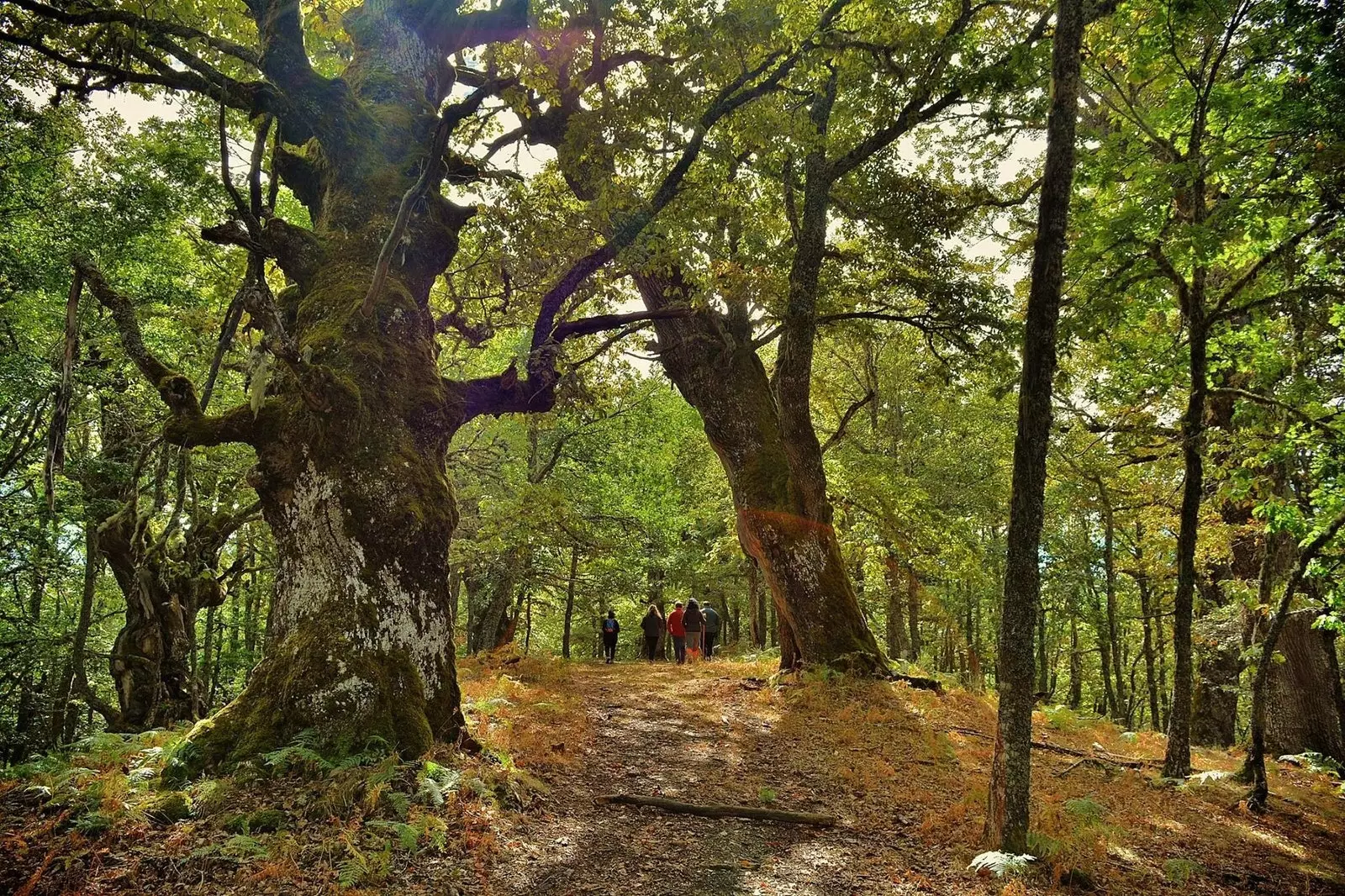
Jurbial Servicios Ambientales offers routes to the Hormas forest, full of beech, oak and holly trees.
According to Ernesto Díaz, creator of Jurbial Servicios Ambientales, they also offer in May routes linked to the flowering of daffodils and orchids (a botanical peculiarity of the area is that it houses around 40 species of wild orchids); a guided route to the source of the river Esla in Valdosín, specifically in the source of the Naranco; geological walks (we must not forget that the province of León has a large concentration of points of geological interest) and visits to the Hormas forest: "Every weekend from spring to the last day of September, because then access is prohibited, since this natural jewel of the Riaño Mountain is a reserve of interest for the brown bear, where the animal goes to feed, so it remains closed for two months".
**OTHER ROUTES **
The kids love the (marked) route to the Cueva de la Vieja del Monte, in the beech forest of Las Viescas, since as they walk without difficulty they discover this character from Leonese mythology who brought what he collected in the forest in his bag, and gave it to the elders so that they in turn, once they returned to the town after work in the mountains, they handed him over to the 'guajes'.
The older ones, on the other hand, prefer to enjoy the impressive panoramic views offered by the Alto Valcayo and Las Hazas or Biescas viewpoints. In the former (next to the Riaño campsite) they have converted an old watchtower into a kind of shepherd's hut and in the latter they have just placed a bank in the first row that is already becoming a serious competitor 'of the most beautiful in León'.
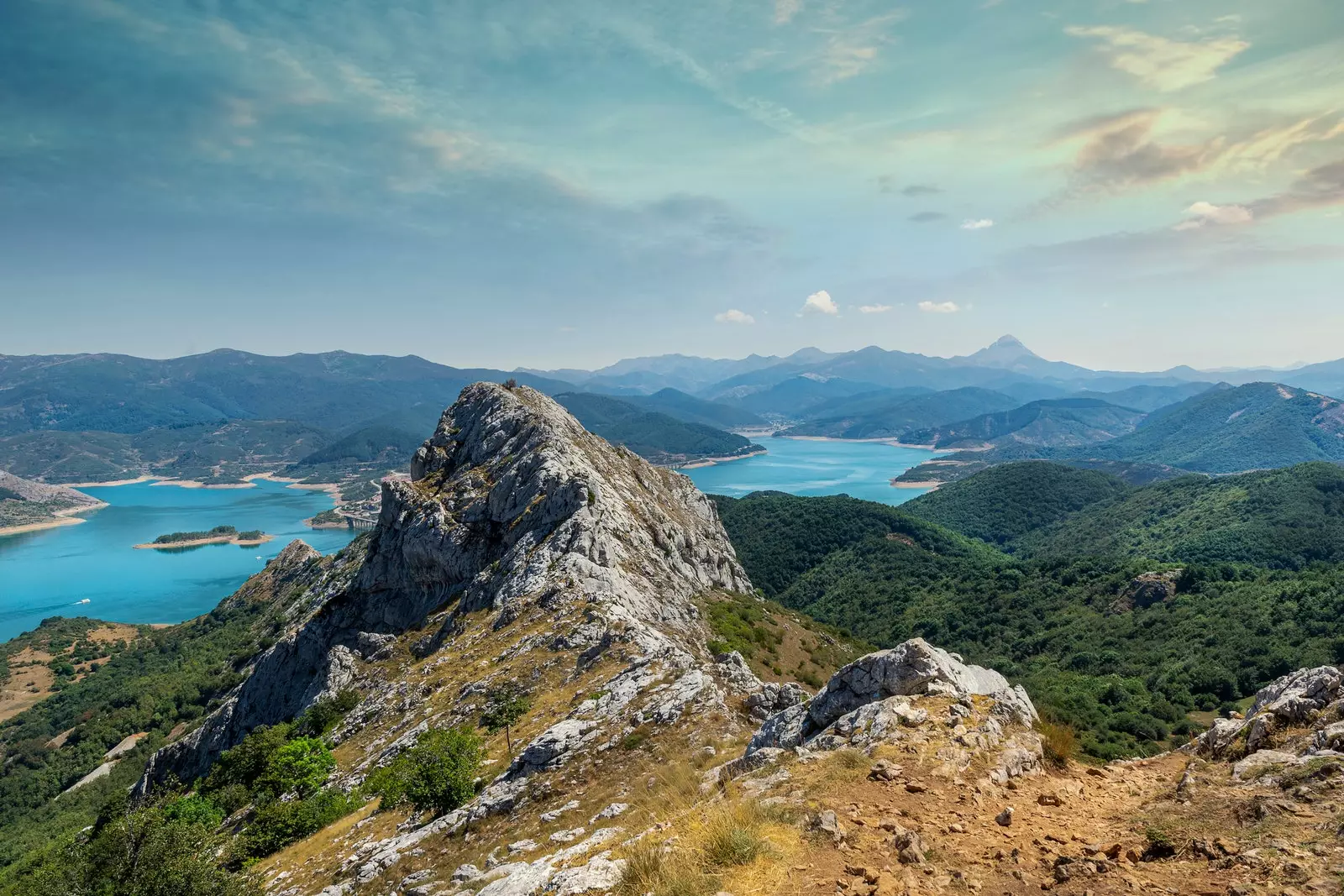
Views of the Riaño reservoir from the Gilbo peak, in the province of León.
In the Mampodre massif, the most intrepid can practice their climbing skills in Maraña, where there are more than 100 sport climbing routes ranging from third grade to 8b. And regarding the hiking routes and ascents, the most popular are the short and circular one to the Horcadas passes and the complicated climbs to Las Pintas, to the Yordas (or Burín) peak and to the Gilbo, who despite his short stature (1,679 m.a.s.l.) is known as the Leonese Matterhorn.
Another comparison that, again, gives us a clue of the grandeur that we are going to find in the Regional Park of the Mountain of Riaño and Mampodre, that until recently did not appear on the maps, it does not have the highest mountains, it is not even a virgin environment, because the hand of man took care of that, and even so He leaves everyone who decides to come to meet him speechless.
